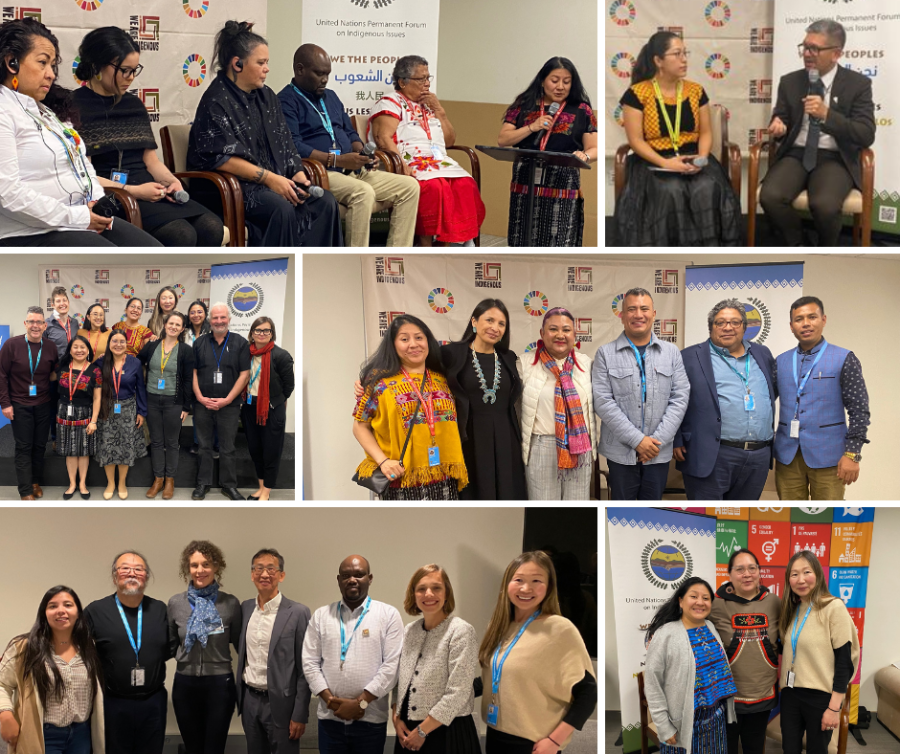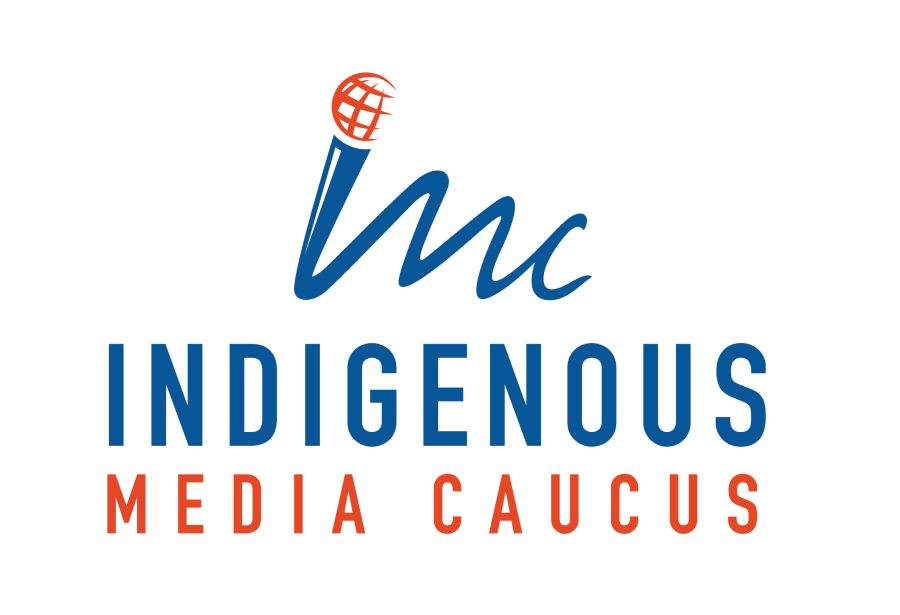
By Sócrates Vasquez and Avexnim Cojtí (CS STAFF)
Indigenous Peoples around the world continue to resist and reinvent ways of maintaining their lifeways in the face of the onslaught of a civilization increasingly in decline, based on the ideas of anthropocentrism, a free market, and destroying nature to quench their thirst of accumulation. Indigenous communities face attacks on multiple levels, including extractivism in their territories, and appropriation of their cultural creations and knowledge. In recent decades, the struggles of Indigenous Peoples to protect their ancestral knowledge and intellectual property has increased leaving lessons in organization, lobbying, and alerts from Peoples who have experienced cultural appropriation.
Cultural appropriation includes forms of extractivism in Indigenous territories, where transnational mining, oil, gas, pharmaceutical, seed, and fashion industry companies, to name a few, exploit a natural resource, impacting the lives of the communities they have protected or rely on said resource for their livelihoods. Cultural appropriation is an asymmetric relationship between cultures and societies, where the dominant culture/society deals with and justifies its relations with minorities, in this case the Indigenous Peoples, to use their knowledge, ways of life, art, their relationships with plants and animals, spirituality, worldviews and other aspects of Indigenous identity for capitalist consumption. In the 21st century, Indigenous Peoples are not free from being constantly "discovered" by some businesspeople.
The cultural appropriation that we address in this article is based on how Indigenous Peoples and communities are suffering extractivism or appropriation without their Free, Prior and Informed Consent and where they are not respected as the collective creators of said tangible and intangible culture, use, or traditional knowledge. Appropriation, in general, implies the separation of the creation from the original authors, the modification of the original meaning or the use of the creation to be marketed as a new product that can be massively consumed. This new product is shown as a new creation or reinvented by the appropriator. The benefit of social recognition or economic benefit remains with those who appropriated the tangible or intangible culture, while the community that has created and protected it for hundreds of years continues to suffer systematic racism for maintaining it.
Indigenous Peoples demand the recognition and protection of their artistic and cultural creations, uses, and relationships with plants because they have been their protectors and many have given their lives to defend their lifeways, cultures, and relationships with the environment. Cultural extractivism leaves communities more vulnerable than they already are. In addition, with free market laws and the legal norms of private patents that privilege corporations, companies, and individual creations, the demands or complaints of collective intellectual property of Indigenous Peoples remain only anecdotes. These forms of economic subsistence of traditional knowledge or use are harmed because Indigenous communities cannot continue to produce something that is now produced massively. Such is the example of the dream catchers of the Ojibwe-Chippewa Peoples, which are now mass-produced in China and sold in dollar stores, totally alien to their creators and to their original meaning, and replaced with profits benefiting a company instead of its creators.
The case of the “xaam nëxuy” blouse from Santa María Tlahuitoltepec, Mexico, by the designer Isabel Marant, is a flagrant case of plagiarism of Ayuujk designs and collective clothing that is used ancestrally and represents the cosmoexistence and wisdom of the community passed down from generation to generation. This blouse, as well as the Indigenous clothing of many communities in the world, is collective and not individual property. Individual adaptations and modifications to the blouse that are created as fashion are also considered collective creations. The blouse was sold by Marant as her own creation and the sale price was 300 percent more expensive than those made by the women and men of Santa María Tlahuitoltepec.
As in this case, there are many communities that are not even aware that their designs are marketed by international companies, and if they do, they do not go beyond public denunciation, because international laws do not recognize collective rights.
The struggle carried out by the Union of Yageceros Healers of the Colombian Amazon (UMIYAC), made up of the Cofán, Inga, Siona, Coreguaje, and Kämsa Biya Peoples in southern Colombia is another example of cultural and biodiversity extractivism. Traditional healers have denounced many outsiders coming to Indigenous communities to be in yagé ceremonies. These ceremonies are now also being done by young people from the community who do not have the experience or ancestral knowledge and do it because there is a high demand and a short-term economic benefit. The sacred plant of the Yagé or Ayahuasca is being offered commercially through spiritual retreats, Ayahuascaqueras ceremonies, and schools of shamanism. UMIYAC denounces this exploitation, “It is a mercantile phenomenon of use, consumption, manipulation, and appropriation of our medicinal traditions, our knowledge, and our image. These practices violate the sacredness of our worldviews, offend our authorities, and go against ratified international conventions and treaties to protect the intangible, medicinal, spiritual and cultural heritages of Indigenous Peoples (ie: Colombian Constitution of 1991, Convention 169 / ILO , 1989 and the United Nations Declaration on the Rights of Indigenous Peoples of 2007, among others)."
The Yagé plant and the ceremony are the collective, ancestral, and an intangible heritage of the Amazonian Peoples and its superior purpose is to heal, not to be commercialized. Commercialization causes the use of the plant to become decontextualized. Unfortunately, the calls and denunciations of Indigenous Peoples have had little impact on the looters of Indigenous cultures. We need more support from national governments and more corporate responsibility towards the Peoples.
One recent successful case of respect for ancestral knowledge is the case of the Khoi and San Peoples in South Africa. For thousands of years, the Khoi and San Peoples have maintained the use of the popular Rooibos (red grass) tea as a medicine and drink. Rooibos is a tea that is now drunk by the general population in South Africa and is commercially exported all over the world. In 2019, the National Khoi and San Council won a successful royalty negotiation for being the first Peoples to explore and preserve the ancient knowledge of the uses of the rooibos plant. The Kho and San people now receive 1.5 percent of the profits of the Rooibos industry after deducting costs, which is still very little for all the land grabbing and exclusion of the oldest Peoples on the African continent. However, this is one of the first cases of legal recognition of ancestral knowledge and millenary use of plants by Indigenous Peoples and is an example for other Peoples to also fight for ancestral uses of plants in each country or region.
Indigenous Peoples must demand their right to Free, Prior and Informed Consent before their tangible and intangible cultures are used commercially by outsiders or used publicly by the State. Another example of cultural appropriation is the folklorization, or promotion of Indigenous cultures as the national culture of a country, when Indigenous Peoples are systematically oppressed, excluded, and discriminated against such as in Guatemala and the Ministry of Tourism INGUAT.
How to Move Beyond Extractivism and Appropriation to Trust, Relationships, and Benefit Sharing
The principle of Free, Prior and Informed Consent indicates that “all Peoples have the right to pursue their economic, social and cultural development.” The most powerful international instruments in defense and promotion of consent are the UN Declaration of the Rights of Indigenous Peoples (UNDRIP), the Convention on Biological Diversity, and ILO Convention 169. Free, Prior and Informed Consent is an avenue to create a relationship of respect for Indigenous Peoples. Free, Prior and Informed Consent could be more viable when communities are organized and have already undergone an internal decolonization process and are aware of their collective rights, including their collective intellectual property. Anyone that wants to work with Indigenous communities has to respect the potential negative decisions towards a project proposal.
When an Indigenous community or a sector is not organized, has poor representation in terms of leadership, or where there is a protruding division in the community, it is important that companies respect Indigenous processes and withdraw, as they would be creating more division. In order to have a true collaboration with Indigenous Peoples, it is necessary to build a reciprocal relationship, where Indigenous Peoples can make decisions at the same level as the company. In addition to this, it is important to consider the economic and social benefit of both parties, which should not repeat the capitalist model, where whoever extracts the product benefits with 95 percent and the Indigenous Peoples are left with only 5 percent of the final prize of the product.
According to Australian Aboriginal lawyer Terri Janke, economic collaborations for Indigenous Peoples include, but are not limited to, a sum of funds prior or after a collaboration agreement, holding shares in the company, or royalties. Non-monetary compensation includes support for the preservation, environmental protection, and defense of land, and the recognition of the Peoples as the creators and caretakers of tangible and intangible cultures, as stewards of relationships with plants, animals, and places.
A tool that is in the process of being created is the legal instrument for the protection of traditional knowledge, cultural expressions, and genetic resources by the Intergovernmental Committee on Indigenous Peoples, Genetic Resources, Traditional Knowledge and Folklore of the World Intellectual Property Organization (WIPO). When complete, member States will be able to sign it and integrate into domestic laws. This tool is based on the recommendations and experiences of Indigenous Peoples that have directly experienced cultural appropriation and appropriation of biodiversity in Indigenous territories since 2005. The World Intellectual Property Organization has 193 member states around the world and if they become signatories to the tool, Indigenous Peoples will have another mechanism to demand rights to their ancestral intellectual property.
Photo: Ayuujk weaver, courtesy from Luis Balbuena Gómez.


